Two more town halls will happen Tuesday in Dillsboro and Thursday in Bright.
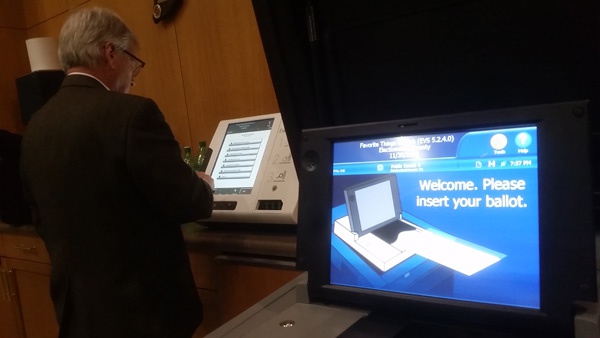
At a town hall meeting held Monday, December 3, Dearborn County Commissioner Jim Thatcher tries out the new voting machines which will allow the county to switch to a vote centers model in 2019. Photo by Mike Perleberg, Eagle Country 99.3.
(Dearborn County, Ind.) - Dearborn County citizens have another chance to learn and ask questions about a vote centers proposal tonight.
Dearborn County Clerk of Courts Gayle Pennington held a public town hall meeting at the Lawrenceburg Fire Department on Monday, December 3 to share about the proposal to transition the county to a vote center model for its elections.
“We’re operating on the Secretary of State’s timeline right now, so we are holding these town halls for feedback,” Pennington told a sparse crowd.
The second of three town hall meetings happens Tuesday, December 4 at 7:00 p.m. at the Dillsboro Civic Center. The last town hall will be Thursday, December 6 at 7:00 p.m. at the Bright Lions Club.
The vote centers method would mean fewer voting locations in the county. Pennington expects the plan to include about 10 polling locations located along main thoroughfares across the county. Specific locations have not yet been determined.
“This will save so much time for a person who goes out of town before the polls are open,” said Pennington.
With fewer polling places open on election day, there will be less of a need for poll workers. The county’s political parties currently need 255 poll workers for a county-wide election, but Pennington said that number – and the money the county pays for poll workers – could be drastically reduced.
A representative of Election Systems & Software was present at the Monday evening town hall with models of the new voting equipment and machines the county expects to purchase. Attendees got a hands-on walkthrough of how to cast their ballot.
After a voter signs in on a poll book tablet by scanning their driver’s license, their ballot is printed. The new machines use a carbon paper cardstock. Because the ballot paper is printed using heat, there is no worry about running out of printing ink.
From there, the voter will take their blank ballot and insert it to a ballot marker machine. The voter will interact with a touchscreen to make their selections. The screen can zoom or do high-contrast for those with vision issues. Blind and hearing-impaired assistance is also featured. The software prevents voters from “overvoting,” or marking more than the appropriate number of candidates in each race.
Once the voter makes all their choices, the ballot is marked by the machine and returned to the voter. The voter then takes the ballot to a ballot counting machine, which retains the paper record as well as tallying the count on a USB drive.
The ES&S representative said each machine operates independently, meaning there could be no widespread malfunction if just one device fails.
Hacking the machines or results will also be impossible. The only device connected to the Internet is the poll book tablet, which syncs with the Indiana Secretary of State’s registered voter database.
“The votes are not going out on the world wide web or anything. These machines are not Internet connected,” said Pennington.
Only one ballot scanning machine would be needed at each of the 10 polling places. The county’s current voting equipment requires one ballot scanner for each of the 35 voting precincts in Dearborn County.
There would be at least several of the ballot marking machines at each polling place. ES&S says a machine could be moved in the middle of election day to help meet demand if one polling place gets particularly busy.
For verification and recounts, election officials could refer to the electronic record from the ballot scanning machine or the paper ballots.
Another reduction of cost could come from not having to pre-print ballots. State law requires counties to print enough ballots for every registered voter in the county, but the ES&S machines allow for ballots to be printed on-demand as needed.
The county will have to purchase the new voting equipment from ES&S for $443,000. Pennington said the vendor has agreed to give the county a credit for trading in its current voting machines.
Pennington said the county has budgeted about $112,000 per election. About $40,000 of that cost is for printing ballots.
“Overall, the task force and I thought that we would have a savings of around $100,000 per election year,” she said.
County commissioners and county council have already signed off on the vote centers plan. If Dearborn County’s plan gets approval from the Indiana Secretary of State, the vote centers could be put to use in the 2019 city elections.
RELATED STORIES:
Dearborn County Citizens Get Opportunities To Talk Voting Centers
The Way Dearborn County Votes Could Be Changing
Call For Poll Workers As Vote Center Decision Looms In Dearborn Co.
Dearborn County Task Force To Consider Voting Centers For Elections

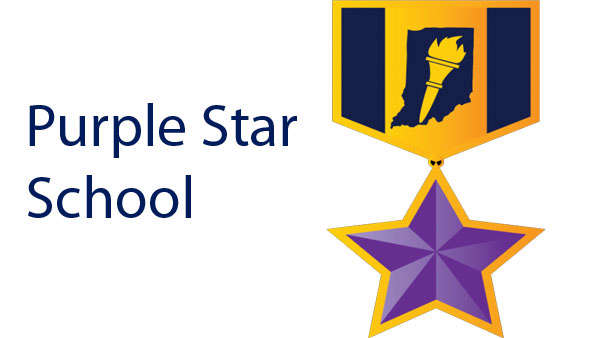 Switzerland County Middle School Named Purple Star School
Switzerland County Middle School Named Purple Star School
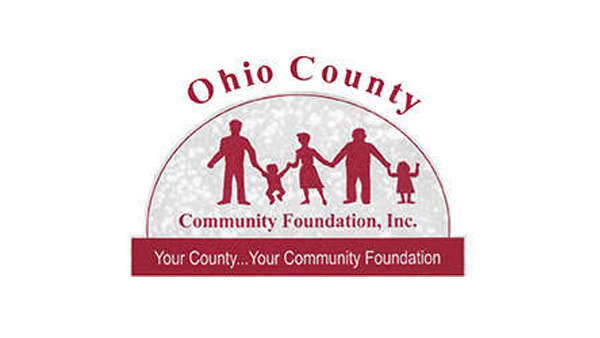 Community/Junior College Scholarship Applications Available
Community/Junior College Scholarship Applications Available
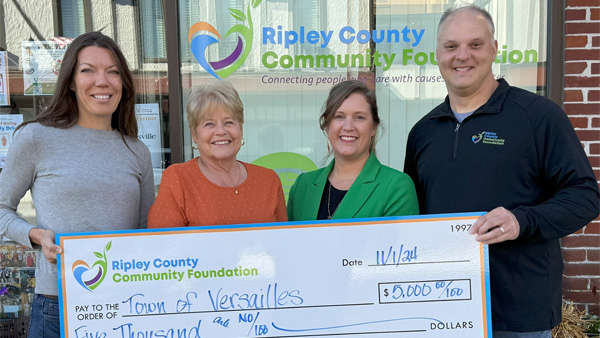 Ripley County Community Foundation Awards $50K to Local Charitie
Ripley County Community Foundation Awards $50K to Local Charitie
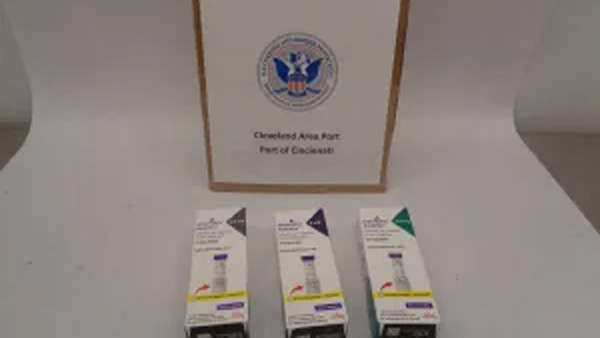 Cincinnati CBP Discovers Unapproved Weight Loss Drugs
Cincinnati CBP Discovers Unapproved Weight Loss Drugs
 Versailles Firefighters Experience Busy Thursday
Versailles Firefighters Experience Busy Thursday
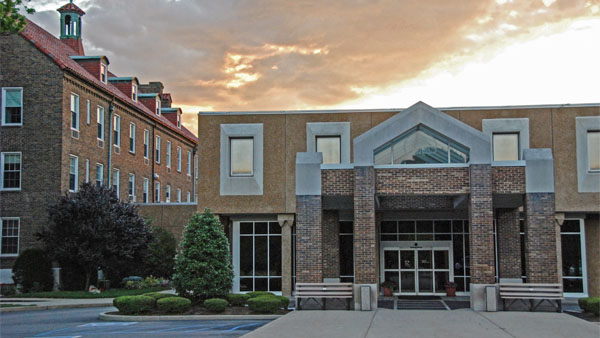 Margaret Mary Health Foundation Awards Eight Grants
Margaret Mary Health Foundation Awards Eight Grants












